| | Management practices to prevent erosion | Waterway improvements – design and construction | When to construct a grassed waterway | Selection of suitable vegetation | Maintaining grassed waterways | Gully restoration
Each year, tonnes of topsoil are eroded from localized areas on some Alberta farms. This loss is serious for several reasons:
- The remaining soil has less productivity.
- Eroded soils deposited elsewhere in the field carry nutrients and pesticides that will increase the range of soil conditions in the field.
- Eroded soil may be carried into nearby watercourses, reducing water quality.
The Alberta Soil Conservation Act places the responsibility for controlling erosion on the landowner and requires municipalities to appoint a soil conservation officer to administer the Act locally.
Management Practices to Prevent Erosion
Emphasis should always be placed on management practices that prevent erosion rather than on reclamation techniques to correct a problem after it has occurred. A number of management practices improve soil structure and maintain a protective cover, thus preventing sheet and rill erosion and the eventual formation of gullies in areas susceptible to erosion. Besides erosion control, the following practices or a combination of them will also increase crop production.
Crop residues
Crop residue maintained on the soil surface is the most effective erosion control practice (Figure 1). Studies show that a 30 per cent residue cover could reduce up to 60 percent of soil loss. Also, a conservation tillage system requires that a minimum of 30 per cent of residue should be maintained on the soil surface to act as protective cover. Erosion problems are often caused by practices that remove or bury residues, such as cultivated summerfallow, excessive tillage and stubble burning. Direct seeding or no-till cropping systems are the best methods to keep the most amount of residue protection on soils.
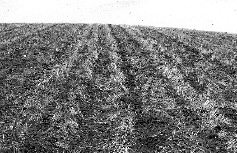
Figure 1. Crop residues help prevent erosion, improve moisture retention and improve soil structure.
Strip cropping
The practice of strip cropping requires different crop alternation on the same field. Well designed strip cropping includes the rotation of perennial grasses, legumes and grain crops. Quite often, the practice is used in areas where long slopes occur and summerfallowing is necessary because of low rainfall.
Forage rotations
Forage cover helps protect soil from erosion because the fibrous roots hold the soil in place. As a perennial crop or plow down, forages add organic matter and improve soil quality and structure.
Manure and chemical fertilizers
Annual applications of manure to ridges (knolls), areas especially subject to erosion, can reduce erodability by improving soil structure and increasing yields. Proper fertilization will increase economic returns from the land and will increase the amount of crop residue cover and roots for soil protection.
Cover crops
Areas especially prone to erosion such as waterways and steep slopes should be seeded down in late summer for soil erosion protection (Figure 2). Seeding should be done across the waterway or slope. Consideration should be given to leaving these areas under permanent grass cover.
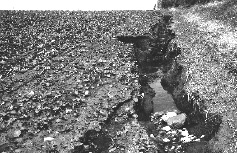
Figure 2. Up and down slope cultivation of erosion-prone areas can result in serious erosion or gully formation.
Grassed waterways
Grassed waterways are broad, shallow channels, vegetated with grass or legumes. They are designed to carry large volumes of water from parcels of land to nearby water bodies and to prevent rills and gully formation (Figure 3).
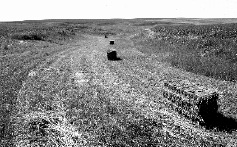
Figure 3. With proper management, grassed waterways can also be a good source of hay.
The vegetation in the channel slows the water flow, traps sediment and nutrients and helps improve water quality in downstream water bodies. With proper fertilization and moisture conditions, a grassed waterway can provide both effective soil cover and a productive forage area. Wider grassed waterways are easier to cross with farm equipment and are more effective in controlling erosion.
Waterway Improvements – Design and Construction
Factors affecting size of waterway
The size of the waterway will depend on the volume of runoff it must handle. The volume of runoff, in turn, depends on three aspects: (a) soil and crop factors such as soil texture, slope, kind and extent of vegetative cover, and whether the soil is frozen or has a shallow impermeable layer; (b) rate of snowmelt or duration and intensity of rainfall; (c) the total drainage area.
Selection of a typical grassed waterway cross-section area
A properly designed and constructed grassed waterway should be at least 0.3 meter deep to prevent overflows and the formation of rills outside the channel. In addition, it should have a minimum 3-metre wide channel bottom with side slopes rising no more than 25 per cent (1 metre vertically to 4 meters horizontally).
This type of cross-section spreads the water, slows its velocity and reduces its power to erode. In addition, the waterway permits farm machinery to cross the channel and allows for easier mowing of the vegetation. Figure 4 shows a typical cross-section. Some farm equipment may require the construction of flatter side slopes for easier crossing of the channel.
Generally, it is recommended that the channel top or bottom width not be less than 5 and 3 metres, respectively, or channel depth be less than 0.30 metres. Waterways that are too small, too narrow or that have a V-shaped cross-section will generate a high flow velocity and will lead to gully formation.
Stabilization of waterways on steeper slopes
The resistance of grass waterways to erosion is limited by the velocity of the flowing water. The permissible velocity of the channel depends on the type and condition of grass cover, soil texture, bed slope and depth of flow. Most grassed waterways that have a 3 metre bottom width and less than 3 per cent bed slope (3 metres fall per 100 meters of channel length) and carry less than 0.20 metres depth of water generate acceptable flow velocities.

Figure 4. Cross-section of a typical grassed waterway (not to scale).
If the slope of the constructed watercourse has a section steeper than 3 per cent and the estimated depth of flowing water greater than 0.20 metres, erosion control blankets should be use to prevent rills/gully development and to help establish grass cover (Figure 5).
Many erosion control mats are commercially available; they can provide either temporary or permanent erosion control measures. A permanent erosion mat installed to the manufacturer and engineering specifications can provide adequate protection on slopes up to 15 per cent.
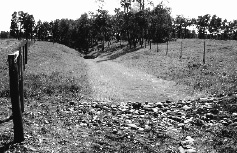
Figure 5. The North American Green P300 mat provides permanent erosion protection of steep channels carrying large amount of water.
In some instances, when a channel conveys a large amount of water on steep slopes and choosing a new channel direction with a gentler slope is not possible, the construction of channel stabilization structures made of concrete or steel may be necessary. Generally, these structures are more difficult to design and technical assistance should be obtained from a local engineering firm.
When to Construct a Grassed Waterway
Construction should begin only if there is a reasonable assurance that all the necessary construction work can be completed in a few days. Construction when the drainage area has a good soil crop or residue cover may be the most desirable. Then if heavy rain or rapid snowmelt occurs soon after construction, there will be the least amount of runoff down the freshly worked channel. Late spring and early fall are suitable times for construction as the soils can be worked easily, and good growth of grass is likely.
When a grassed waterway is to be constructed in a poorly drained area, a dry period must be chosen in which to do the work. In some instances, it may be necessary to direct water away from a new waterway until all the work has been completed and the vegetative cover stabilized.
Selection of Suitable Vegetation
Suitable vegetation is essential for a durable and effective grassed waterway. The grasses must be erosion-resistant but must also allow water to flow down the channel. The best grasses for grassed waterways are dense, tough, long-lived, short-growing, sod-forming grasses. Bunch grasses do not typically form a good sod cover and are not the best grasses for waterways. Tall grasses can block water flow, may not be erosion-resistant at the soil surface and may require periodic cutting; however, mixed stands of tall forages may be suitable where there is the secondary goal of hay production.
The following grasses have some or all of the above erosion control properties that make them suitable for use in grassed waterways. The best grasses are listed first. Some have properties that make them suitable to grow in specific soil-water conditions, such as the presence of salinity or acidity, or high water tables.
Northern and western Alberta:
- creeping red fescue
- meadow fescue
- tall fescue
- creeping foxtail
- meadow foxtail
Southern and eastern Alberta:
- stream bank wheat grass
- pubescent wheat grass
- western wheat grass
- northern wheat grass
Seedbed Preparation and Seeding Instructions
A grassed waterway should be seeded at a higher than normal rate. The seed mixture could include fall rye or another cereal crop to provide earlier but temporary soil erosion protection until the permanent grass cover is established. Slender wheat grass has excellent establishment properties that also make it attractive for temporary first-year growth until the other erosion control grasses are better established, usually in their second season.
A well-prepared seedbed will improve stand establishment. Before seeding, the topsoil that was stockpiled and re-spread onto the waterway should be harrowed. Seeding and harrowing should occur perpendicular to flow direction of water to prevent gully formation along the sides of the waterway. Furrows left along the edges of the waterway will initiate new gully formation. Also, seeding should be done as soon as possible after topsoil spreading to minimize the risk of erosion. Where the erosion risk is very high, a biodegradable erosion-control blanket can be installed on the waterway to prevent erosion until the grass cover is firmly established.
Maintaining Grassed Waterways
To remain functional, grassed waterways must be properly maintained as follows:
- Repair and reseed any bare or eroded spots as soon as possible. Check the waterway after spring runoff and heavy rains. Damage noticed early can be repaired before it becomes a major problem.
- Before spring snowmelt, clear a path through the snow in that waterway. This prevents misdirection of spring runoff water to unprotected areas.
- Trim grass to promote a good, strong sod and to prevent the waterway from becoming blocked. Cutting for hay is an added bonus.
- Keep cattle out of the waterway. Their hooves can puncture the sod, giving erosion a place to start.
- Do not use your waterway as a road. Tire ruts damage the sod and give erosion a place to start.
- Take care when cultivating next to the waterway so that runoff drains into the waterway and not alongside it. Cultivation should include a final lengthwise pass with a cultivator and a harrow along both sides of the waterway to eliminate dead furrows and soil mounds.
- Apply nitrogen fertilizer for the best possible grass growth.
- Control ground squirrels and other burrowing animals that may live in the waterway. Their activities can create weak spots where new erosion problem can start.
- Keep an uncultivated strip, at least 3 metres wide, on each side of the waterway for stability.
- Control weeds in the waterway, especially perennial broad-leaved weeds, to stop them from spreading downstream or onto surrounding fields.
- Do not dump rocks, dead trees, old cars or other items into the waterway. Flowing water will swirl around these objects, increasing the water’s ability to erode.
Gully Restoration
Gullies can be filled and properly contoured with several different types of equipment. A farm tractor and disker may be effective in filling shallow gullies. Deeper gullies may require the use of larger equipment such as road graders or dozer blades mounted on farm tractors or crawler tractors. Some municipalities make their equipment available for work of this nature.
Here are important steps in gully restoration:
- Step 1. Remove the topsoil from the working area and stockpile it before starting construction of the waterway (Figure 6). The working area should be at least 20 metres wide for smaller gullies in order to have sufficient fill material. The waterway should be undercut 0.10 metres to accommodate the topsoil replaced for grass establishment.
- Step 2. Fill the gully with sub-soil. The excess sub-soil material may be spread in low areas on both sides of the waterway. Good compaction of the fill is essential and should be started early in the operation. Debris, such as trees, that might cause further settling should not be included in the fill. If fill material or topsoil must be hauled for any distance, tractor-drawn earth scrapers might be needed.
- Step 3. Seed and harrow the waterway perpendicular to the flow direction of water. Reconstructed waterways should be seeded to grass immediately after topsoil spreading, to minimize the risk of erosion and to provide sufficient time to establish good grass cover before high runoff occurs. Furrows left along the edges of the waterway will intercept surface running water and can initiate new gully formation.
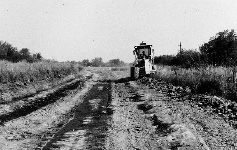
Figure 6. Road graders are useful in removing of topsoil from construction areas, repairing gullies and constructing waterways.
Prepared by:
Andrzej T. Jedrych
Source: Agdex 573-5. Revised April 2007. |
|